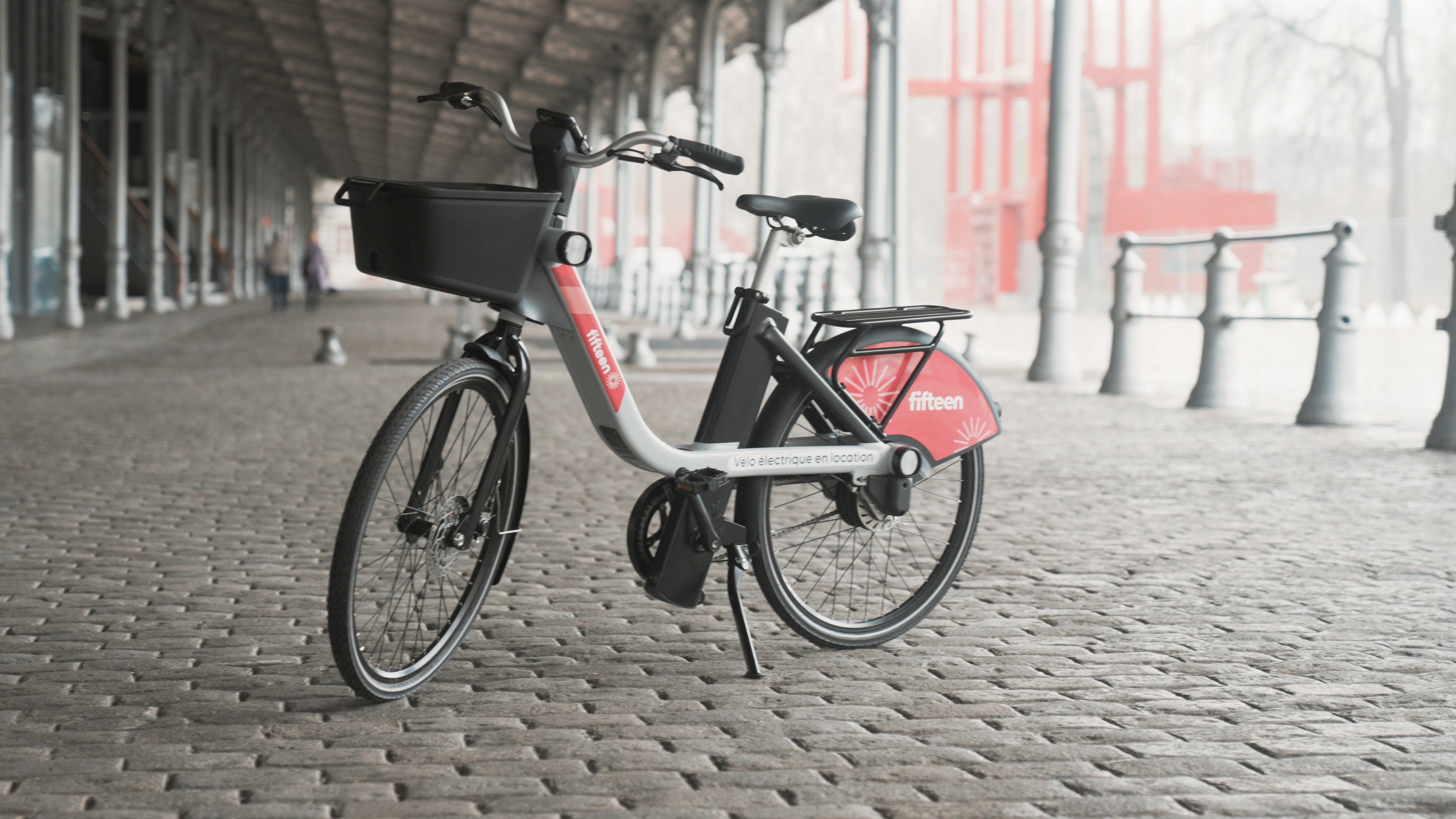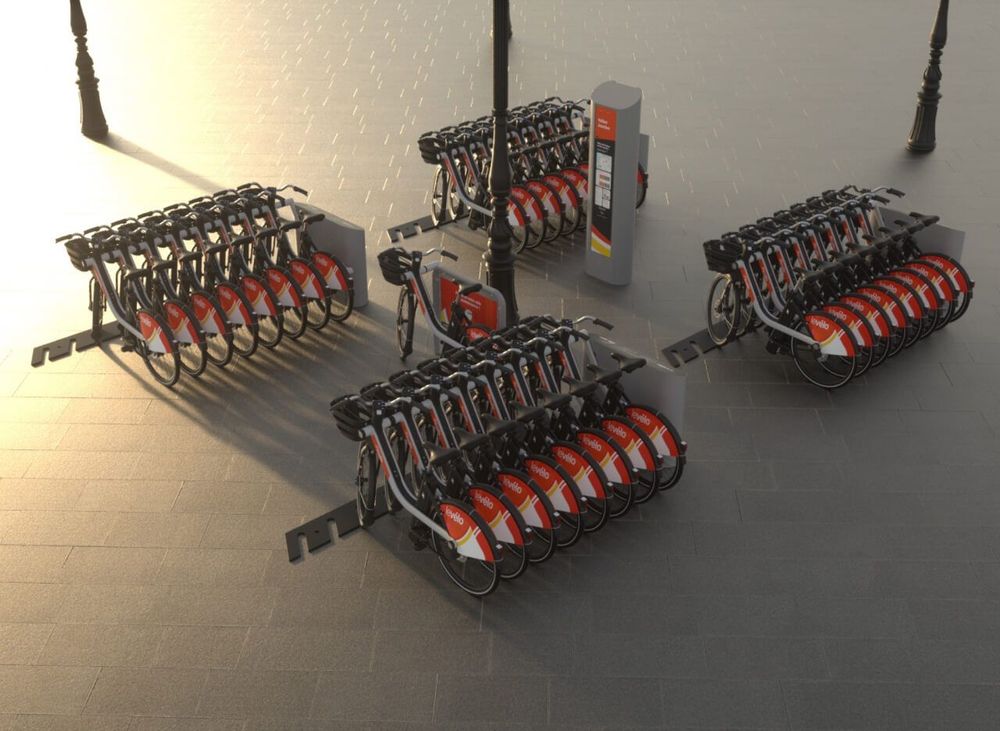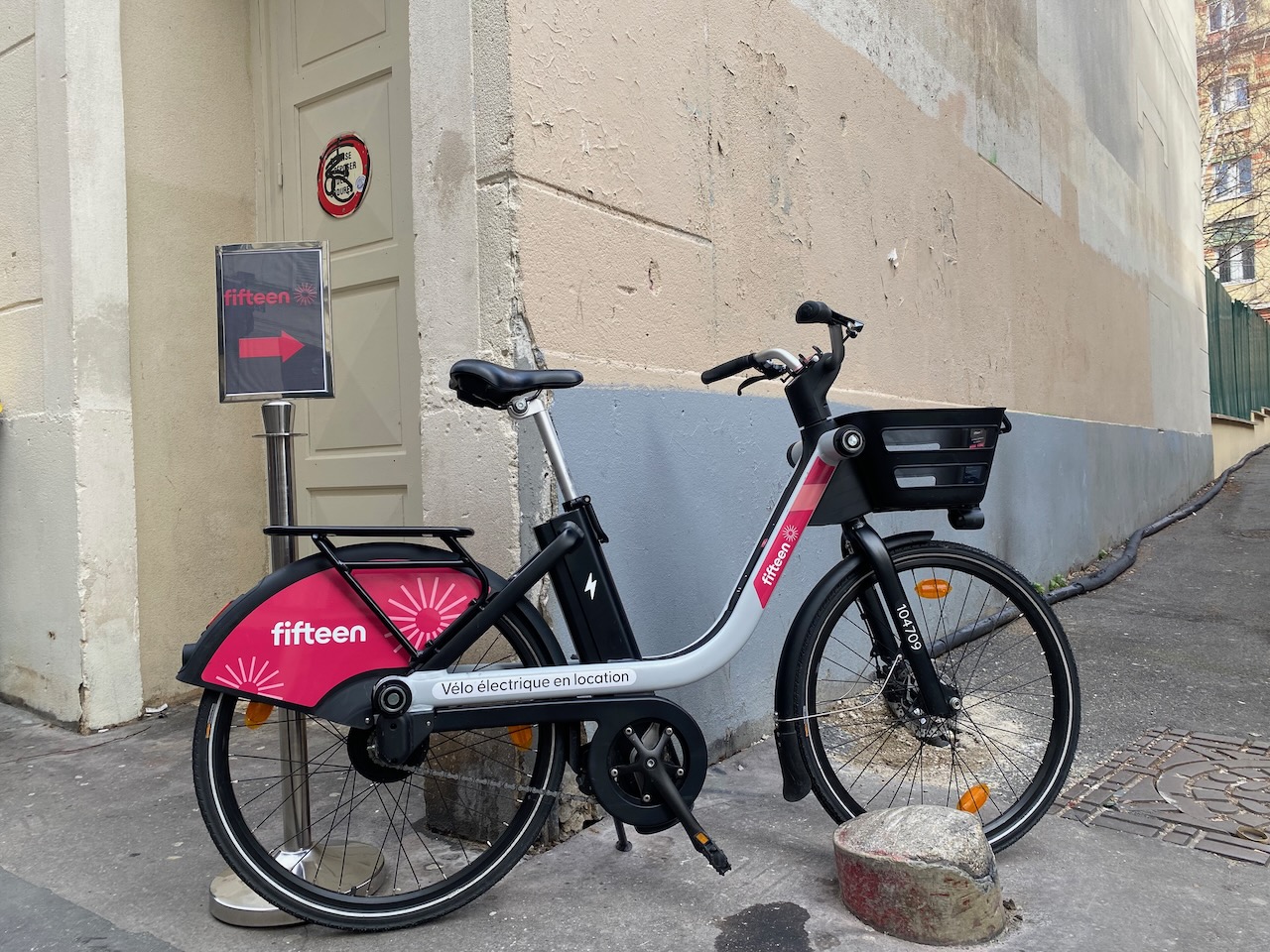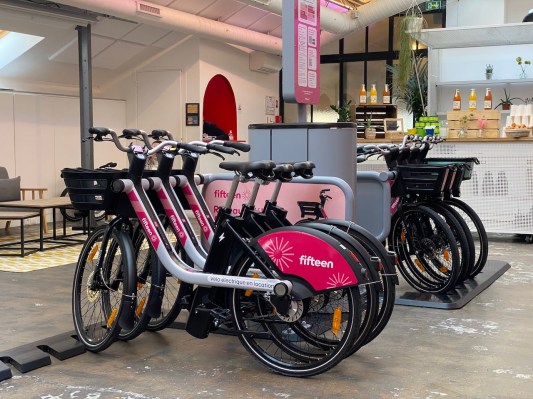Fifteen might not be a familiar name, but you may already know some of Fifteen’s bikes. Fifteen is the new name of the companies formerly known as Smoove and Zoov — these two companies with weird names merged a couple of years ago.
Smoove is one of the companies behind the Vélib’ bike-sharing service in Paris (along with Indigo, Mobivia and Moventia). And Zoov offered a hybrid bike-share program for short-term and long-term rentals. While Zoov never reached the scale of Smoove, its bikes and docks serve as the basis for Fifteen’s new offering. Essentially, Fifteen combines Smoove’s reach with Zoov’s technology.
The past few years have been both challenging and promising for Fifteen. When the city of Paris picked Smoove and its partners for the new Vélib’ service, it wasn’t a smooth transition. After some serious hiccups (including financial difficulties), the service has now reached hundreds of thousands of subscribers and tens of thousands of rides per day — Vélib’ is now arguably the world’s biggest bike-sharing service.
Fifteen has now shifted its attention to other cities. The company has been working with local governments to design bike-share programs with new use cases. In a press conference before the Autonomy Mobility World Expo in Paris, Fifteen unveiled the next generation of its bike system and talked about upcoming launches.

Image Credits: Fifteen
New bikes and new docks
A few months ago, Fifteen launched a new bike-sharing service in Marseille. This isn’t the first public bike-share scheme in the city, but it represents a big overhaul compared to the previous service.
“It was a city with an old school bike service managed by JCDecaux with mechanical bikes that were rarely used — only one or two rides per bike and per day,” Fifteen CEO Benoît Yameundjeu said.
But if you’ve seen the bikes in Marseille, they look nothing like Fifteen’s bikes (Smoove’s bikes) in Paris or in other cities. That’s because the company’s revamped bikes and docking stations are the next iteration of Zoov’s bikes and stations.
These electric bikes come with a magnetic docking system. Instead of “slotting” the bike in a dock, you put it next to the most recently used bike. Once the bike is locked, it is secured to the rest of the station with magnets — the station also acts as a charging hub for the batteries.
As a user, it means that you can’t pick a specific bike. You can only unlock the bike that is currently at the end of the station — unless it’s a big station and there are multiple charging stations.
If there is an issue with the bike that you just unlocked, you set it aside and lock it again in a specific area next to the station. This way, faulty bikes are quickly isolated from the rest of the fleet.
You can see how it works with this picture. There are four different charging stations and an area in the middle for faulty bikes:

Image Credits: Fifteen
“We wanted to build a dense parking system that is easy to install with our proprietary energy transfer system,” Fifteen chief product and technology officer Arnaud Le Rodallec said. With these stations, you don’t have to dig large holes for individual electrified docks.
As for the bike, Fifteen’s electric bike is more modular. Cities can pick and choose some features with multiple options for the front basket, an optional high-capacity battery with a range of 120km, etc.
“We’ve also worked on the frame. The more pieces there are, the more complicated it becomes,” Le Rodallec said. “It allows us to save 1kg in weight for the frame, to reduce costs and to improve reliability.”
But the most interesting feature is that it hasn’t been specifically designed for a dock-based bike-sharing service. Fifteen’s clients can offer long-term rentals as users can potentially unlock the battery with an app and charge it at home — more on that later.
There are also some built-in sensors so that cities can create virtual stations — it can be useful for special events for instance. They draw a rectangle on a map and users can then lock and unlock the bike in this area by scanning a QR code on the handlebar with an app.
Fifteen is already thinking about what’s next for Paris and other existing cities as the company says cities can get the new bikes with existing docking stations. There’s an adapter that you can attach at the front of the bike.
Augmented bike networks
Fifteen has deployed a fleet of 52,000 bikes across more than 30 cities. In 2022, 1.5 million people interacted with a Fifteen bike-sharing system at some point.
The company is now thinking about other use cases for its bike. For instance, it has designed a new service for Auxerre and its surrounding cities. In May 2023, 320 Fifteen bikes will be deployed across 42 docking stations.
“The first project that I want to talk about perfectly embodies our vision. We want to offer a solution that addresses all needs,” chief marketing and sales officer Amira Haberah said. “If I need a bike for five minutes, I use it for five minutes. If I need a bike for two days because I’m visiting the Yonne department, I take it for two days. And If I want to keep it for 10 months, I can keep it for 10 months.”
Whether you’re looking for short-term or long-term rentals, you can go to the nearest docking station and unlock a bike with the app. When you’re done, you go back to a station. Two hundred bikes will be available for short-term rides to help you move from A to B. The rest will be allocated for personal long-term rentals.
Fifteen is also working on another project with the Nouvelle-Aquitaine region around the regional train line that connects Royan to Angoulême. Many people still drive to work because their office isn’t next to a train station.
There are eight stops on that line, and Fifteen will deploy a docking station at each train station. When you get off the train, you can unlock a bike, use it for the day and bring it back to the train station in the evening.
So, Fifteen is now focusing on a single, unified platform that should address the needs of local governments of all sizes — from cities to regions — and for all needs — traditional bike-sharing service and long-term rentals. The company now has one bike, one docking station and one software stack.

Image Credits: Romain Dillet / TechCrunch
